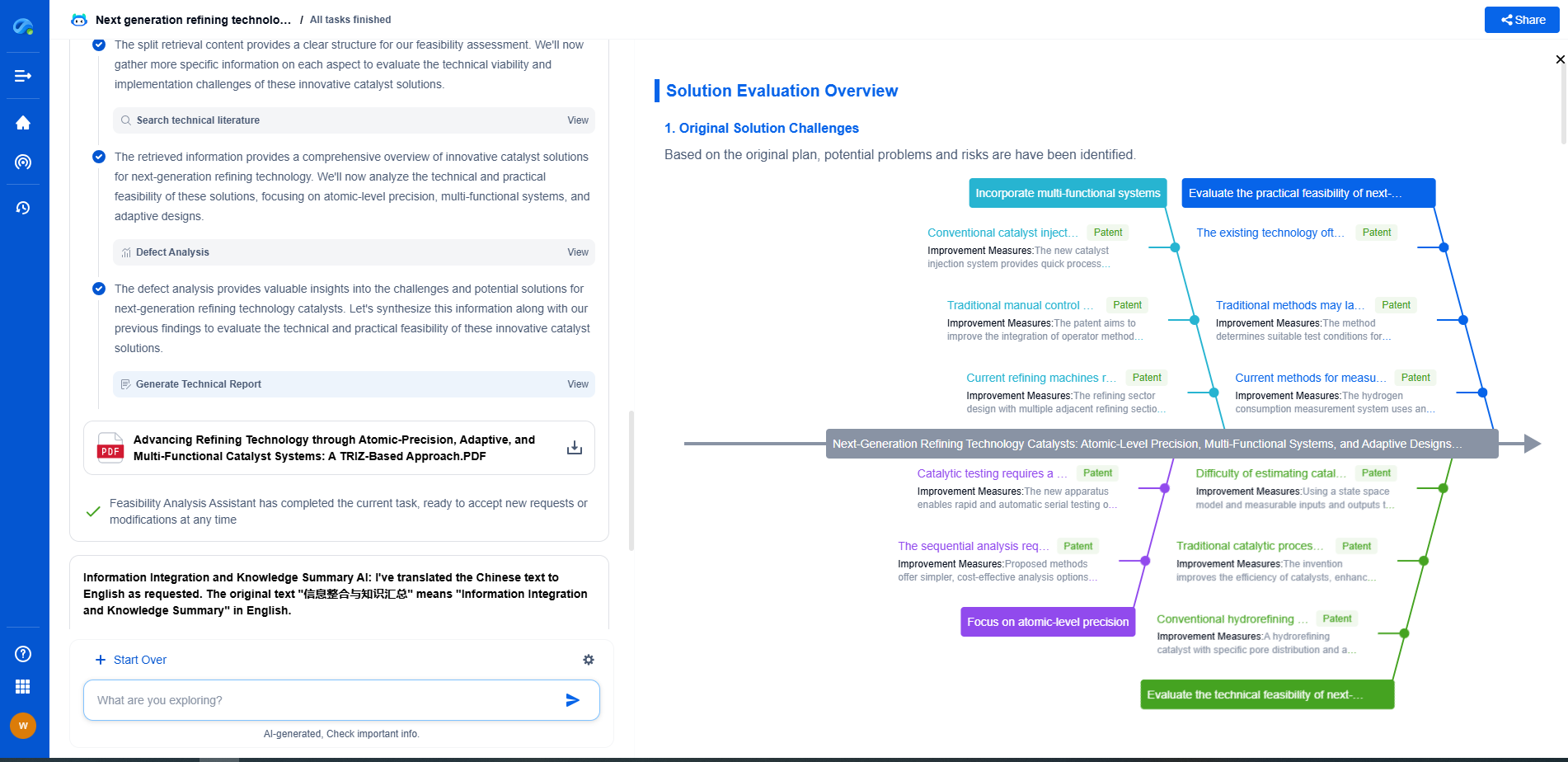Sensor latency and its impact on control performance
JUN 26, 2025 |
Sensor latency refers to the delay between the actual occurrence of an event and the moment the sensor detects and reports that event. In an ideal world, sensors would operate instantaneously, transmitting data in real-time with zero delay. However, in reality, various factors can introduce latency, including the sensor's processing time, data transmission delays, and the time it takes for the sensor to capture and convert signals into usable data. Understanding these factors is crucial for effectively managing and reducing latency in control systems.
The Importance of Low Latency in Control Systems
In control systems, especially those used in critical applications like aerospace, automotive, and industrial automation, low latency is of paramount importance. Any delay in receiving sensor data can lead to delayed responses, inaccuracies, and, in extreme cases, catastrophic failures. For instance, in an autonomous vehicle, a delay in processing sensor data could mean the difference between a smooth navigation and a collision. Similarly, in industrial settings, delayed sensor feedback could result in equipment malfunction or inefficiencies, impacting productivity and safety.
Factors Contributing to Sensor Latency
Several factors contribute to sensor latency, each of which must be addressed to minimize its impact on control performance:
1. **Sensor Processing Time:** The time taken by the sensor to process raw data before transmitting it to the control system can introduce latency. This includes data filtering, compression, and conversion operations.
2. **Data Transmission Delays:** The method and medium of data transmission can also affect latency. Wired connections generally offer lower latency compared to wireless connections, but factors like network congestion and interference can still introduce delays.
3. **Sampling Rate:** The frequency at which a sensor samples data can impact latency. Higher sampling rates usually result in lower latency, as sensors capture and transmit data more frequently.
4. **Signal Propagation Delay:** The time it takes for a signal to travel from the sensor to the control system adds to the overall latency. This delay can vary based on the distance and medium through which the signal travels.
5. **Computational Delays in Control Systems:** Once data is received, the control system itself may introduce delays due to the time required for data processing and decision-making.
Impact on Control Performance
Sensor latency can significantly affect the performance of control systems:
1. **Reduced System Responsiveness:** High latency can slow down the system’s response to changes, leading to suboptimal performance. This is particularly critical in dynamic environments where rapid adjustments are necessary.
2. **Inaccurate Control Actions:** Delayed sensor data may result in control actions based on outdated or incorrect information, causing errors and inefficiencies.
3. **Increased Oscillations:** In feedback control systems, high latency can cause oscillations as the system overcompensates for perceived errors due to delayed feedback.
Mitigating Sensor Latency
To mitigate the effects of sensor latency, several strategies can be employed:
1. **Choose the Right Sensors:** Selecting sensors with faster processing times and higher sampling rates can reduce latency. Additionally, using sensors designed for the specific application can help minimize inherent delays.
2. **Optimize Data Transmission:** Employing efficient communication protocols and ensuring robust network infrastructure can minimize transmission delays. In some cases, upgrading to faster communication technologies may be necessary.
3. **Implement Predictive Algorithms:** Utilizing predictive algorithms can help anticipate future states based on current and past data, allowing the control system to act proactively rather than reactively.
4. **Use Sensor Fusion:** Combining data from multiple sensors can provide a more comprehensive view, reducing the reliance on a single sensor and mitigating the impact of its latency.
Conclusion
Sensor latency is an unavoidable aspect of modern control systems, but its impact can be managed and minimized. By understanding the factors contributing to latency and implementing strategies to address them, engineers can enhance the performance and reliability of control systems. In an increasingly automated world, ensuring that systems can respond promptly and accurately to sensor data is crucial for both safety and efficiency.
Ready to Redefine Your Robotics R&D Workflow?
Whether you're designing next-generation robotic arms, optimizing manipulator kinematics, or mining patent data for innovation insights, Patsnap Eureka, our cutting-edge AI assistant, is built for R&D and IP professionals in high-tech industries, is built to accelerate every step of your journey.
No more getting buried in thousands of documents or wasting time on repetitive technical analysis. Our AI Agent helps R&D and IP teams in high-tech enterprises save hundreds of hours, reduce risk of oversight, and move from concept to prototype faster than ever before.
👉 Experience how AI can revolutionize your robotics innovation cycle. Explore Patsnap Eureka today and see the difference.
- R&D
- Intellectual Property
- Life Sciences
- Materials
- Tech Scout
- Unparalleled Data Quality
- Higher Quality Content
- 60% Fewer Hallucinations
Browse by: Latest US Patents, China's latest patents, Technical Efficacy Thesaurus, Application Domain, Technology Topic, Popular Technical Reports.
© 2025 PatSnap. All rights reserved.Legal|Privacy policy|Modern Slavery Act Transparency Statement|Sitemap|About US| Contact US: help@patsnap.com

